Monday, March 13, 2006
A visit to Biosphere 2
This was financed by one man from Texas with a cost that exceeded $200 million to build. Planning started in 1984, construction in 1987. It is constructed to be tighter than a submarine or space craft. The first group of eight people entered the closed environment for a two year experiment of living totally inside an enclosed self contained environment. There were a few problems that developed but they did make it through the full two years.
This first photo is of the sign you see as you approach the entry building:
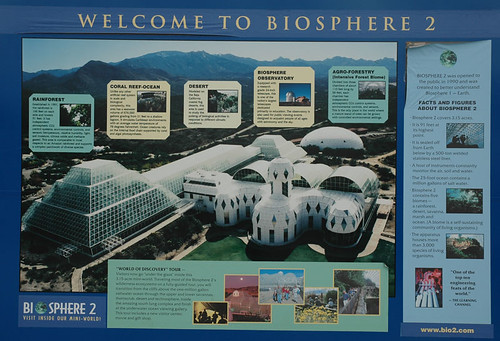
This photo was taken inside the project in the African Savannah area. You can see the rain forest area behind the plastic sheet to the rear of this photo but we did not tour that part. It was also visible from outside the building:
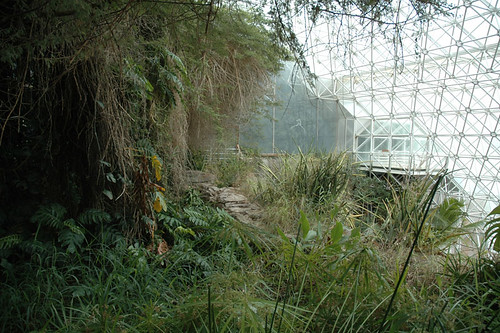
Here we are still in the African Savannah but looking down on the indoor ocean which duplicates a part of the Caribbean Ocean:
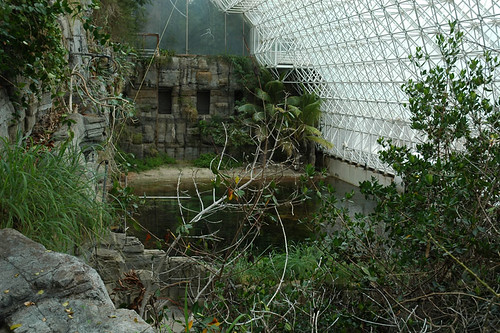
This desert area actually duplicates a part of Baja, Mexico that is at 23 degrees latitude. There are some unique plants in all of these areas and this one is no exception. We are now in the dry time of the year there so it is also dry here. Precipitation comes mostly in the form of fog or mist, so there are misting nozzles located high on the ceiling that will provide a measured amount of water, starting in November to duplicate the actual environment at that location. All water is recycled and no additional water was needed to be added over the two year experiment:
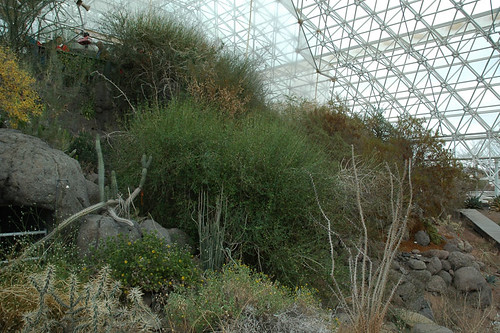
Biosphere 2 is located in a desert where it gets hot outside in the summer. There was concern that with the enclosed environment and all the glass to let the sunlight inside, the heat buildup would get so high it could blow out the glass of the building. Two "lungs" were designed to allow the air to expand, raising the large disk in this next photo as much as 50 feet during the daytime while the heat increased. At night as the interior temperature dropped the disk would drop back down. This works much as a hot air balloon does. There are two of these. The red pumps are to provide fire protection and are capable of pumping water from the tank below them through the fire protection system:
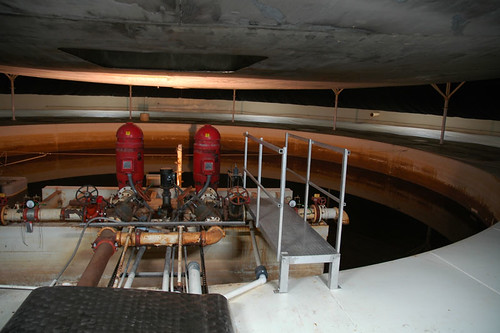
There are viewing windows located outside the ocean where you can observe coral, fish and other undersea plants and animals. This is a view looking into the undersea area from one of those observation points:
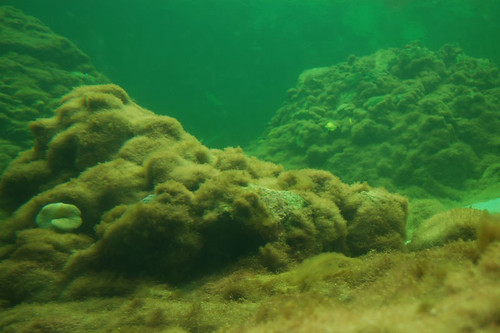
There are some walkways outside the undersea viewing areas that have displays setup to see. This was taken in one of those passageways:
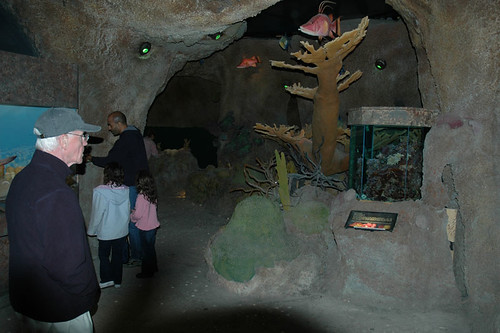
This view is of the main building taken from near some rooms built for college students to occupy. Columbia University operated the Biosphere 2 for some years and they built these for their students. We did not get to see the living quarters of those who lived in the Biosphere 2 for either the two year project nor the later six month one. There is a lot of information available about these projects and it does make for some fascinating reading. Try a Google search to find more info:
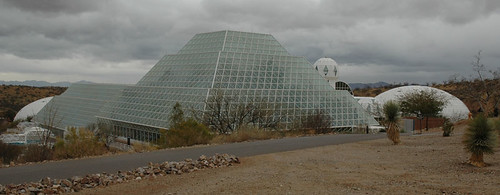
There were unexpected problems, like the slowly curing concrete was removing too much oxygen from the air, reducing the percentage of oxygen and making those inside live with high altitude sickness. The problem was recognized and extra oxygen was put in to offset the lowering percentage of oxygen. The inhabitants were going to eat a primarily vegetarian diet but there was some meat eaten. They had chickens and those that did not produce eggs were eaten as they were using resources and not adding anything. Electric power from the outside was necessary to operate the whole system. There also were some relationship problems with the four females and four males who made up the "crew" in the two year project.
Biosphere 2 covers over three acres on the main floor area and has a two acre basement where the mechanical systems are located. The cost to operate the Biosphere is about $1 million a month. The purchasers of the land are doing a study to determine if it is feasible to keep it or if it should be torn down. They expect to know it's fate by sometime this August. I hope it does continue but am glad that I did have the opportunity to see it.
Labels: Family, Photos, Trips to see things
Great photos, Dick. You are amazing. Thanks for sharing.
Take care, Meow
such a way with words and sharing. Thank you for being the kind soul you are.
Great walk through , it helps with the pics and all the info is great especially since I would never get the chance to see it but would like too, so now I had a virtual tour , neat! hope your well and huggy too, rub the ears!!!!!!for me LOL
Greeneyes
Mike
Mike, the people in that first crew were all specialists. There was a medical doctor, a biologist, a mechanical engineer, etc. They were people selected because their specialities would allow them to keep the Biosphere functioning. Someone on the tour asked what they were paid & the guide said he didn't know the figure but that they were well paid.
Go check out the link I provided as it has a lot more info plus other photos..
Like the site, I will be back.
<< Home


